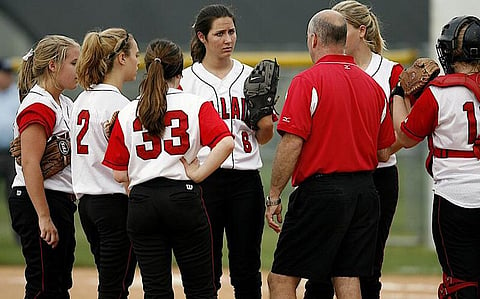
- Home
- न्यूजग्राम
- NewsGram USA
- India
- World
- Politics
- Entertainment
- Culture
- Lifestyle
- Economy
- Sports
- Sp. Coverage
- Misc.
- NewsGram Exclusive
- Jobs / Internships

Washington D.C. [USA], Sep 19, 2017: A recent study stated that a subtler sexism has now made it to the Newsrooms framing the TV broadcast of women in sports.
The ongoing, decades-long study by the University of Southern California researchers suggests, that even if the mainstream broadcast coverage now treats the sports played by women a little more seriously, a major part of it, mostly respectful coverage still has to face the relegation to the sideline.
Only 3.2 percent of airtime, according to the research team, was devoted to women's sports on news broadcasts, by the L.A.-based network affiliates, witnessing a degradation of 5 percent from 1989, which was the first year of the study. ESPN's SportsCenter, on the other hand, only stands worse, devoting 2 percent of the airtime to women's sports, same as it was in 1999 when the study began tracking the show.
"When compared to the start of the study, women used to be framed in ways that were overtly sexist. Now the sexism is subtler," said lead author Michela Musto. "It seems at first that it's respectful, but if you compare the framing with men's sports, women are talked about in a much more boring way. There is no joking or complimenting. Those kinds of descriptors are missing from women's sports."
The researchers have been constant in updating their findings roughly every five years, in 1993, 1999, 2004, 2009 and 2014, to be exact. It has been planned to start the research later this year, for it to be updated in 2018.
The researchers, in a manner similar to the previous cycles of the study, analyzed three two-week segments of TV sports news coverage on three Los Angeles network affiliates, and on ESPN's SportsCenter. The coverage was then coded across 20 distinct categories, which included gender, segment length, type of sport, competitive level of sport, and production value.
Much of the disparity may owe to the little airtime devoted to each individual woman's story on SportsCenter. Sports stories revolving around women averaged 77 seconds, approximately 50 percent shorter than men's stories, however, better than the 44 seconds allotted to them on local affiliates.
The overall respectful coverage may be the advancement from the time when Morganna the Kissing Bandit was one of the few women featured on the local sports report. But the refined tone of this coverage carried a brand of chauvinism, of it own. The researchers gave it the name "gender bland", a programming that confronts the treatment of a mandatory "set aside."
In "gender-bland" programming, the athletic achievements of women are depicted as "lackluster" and "uninspired." That is, unless they approve to the image of caring teammates or partners and spouses, for instance, the 2016 Olympic trap-shooter medalist Corey Cogdell-Unrein's portrayal in mainstream media as "the wife of a Chicago Bears linebacker."
A surge of female athletes since the 1970s, when Title IX, which prohibited discrimination based on gender in education for athletics became a law, makes the sparse coverage of women's sports out of step, the researchers noted.
Around 3.1 million girls participate in high school sports today, compared to 4.4 million boys; in a stark contrast to the situation 45 years ago, when only 294,000 girls played sports in high school, and less than 39,000 played in college.
There are but few women in sports media industry that may play a role in influencing the coverage decisions, noted the researchers. It has been found that 95 percent of anchors, co-anchors and analysts analysing the sports coverage were male. The data shows resemblance to the other findings stating that 90.1 percent of sports print editors happen to be male.
If a woman in the sports broadcast industry happens to scale heights, as the case of Samantha Ponder, a sideline reporter who replaced Chris Berman as host of ESPN's featured NFL program, Sunday NFL Countdown, this August, it still makes big news.
"I do believe that part of the move toward greater respect and equity for women's sports in the media will involve getting more women into newspaper sports desks, radio and TV commentary," said senior author Michael Messner.
"However, I also think that employers, when they hire new people, should seek to hire reporters and commentators — women or men — who really care about women's sports, who can and will express genuine enthusiasm, rather than gender-bland sexism, when they report on women's sports," he added.
The study has been published in the journal Gender & Society.
–prepared by Samiksha Goel of NewsGram. Twitter @goel_samiksha
